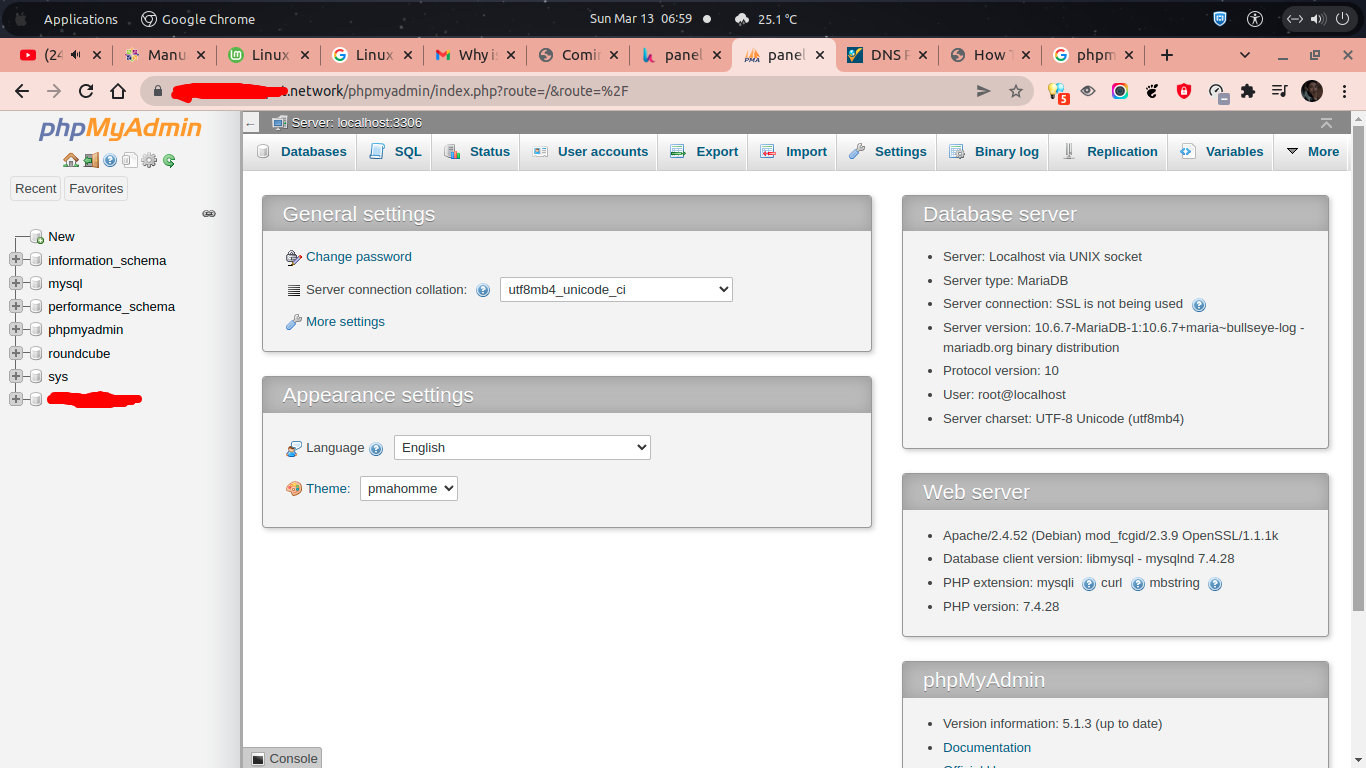This issue appears on the Hestia Control Panel (HestiaCP v1.5.10) running under distro flavours Debian 11 (Bullseye) with MariaDB 10.6.7 Database Server installed on the machine. This Bare-metal server having 64GB Memory (RAM), 16 CPU Cores and 1TB Storage with Software RAID 1. It running under configurations of Apache/2.4.52 (Debian) with mod_fcgid/2.3.9 and OpenSSL/1.1.1k, Nginx Reverse Proxy, and PHP Version 7.4.28. Where the error logs are as follow, it I found when try to login into the phpMyAdmin.
Cannot log in to the MySQL server
mysqli::real_connect(): (HY000/1698): Access denied for user 'root'@'localhost'
To solve this issue simply enable MariaDB 10.6 database server (mysql.service) with the following command:
$ systemctl enable mysql.service
After that you need to secure your MariaDB Installation using the below command and make sure to set proper root password for the MySQL administrative account (superuser privileges). Without it you could not connect to the database server via phpMyAdmin or any other web-based GUI for relational database managements system (RDBMS).
Please note to just press ENTER on the screen prompt Enter current password for root (enter for none):
$ mysql_secure_installation
NOTE: RUNNING ALL PARTS OF THIS SCRIPT IS RECOMMENDED FOR ALL MariaDB SERVERS IN PRODUCTION USE! PLEASE READ EACH STEP CAREFULLY! In order to log into MariaDB to secure it, we'll need the current password for the root user. If you've just installed MariaDB, and haven't set the root password yet, you should just press enter here. Enter current password for root (enter for none): OK, successfully used password, moving on... Setting the root password or using the unix_socket ensures that nobody can log into the MariaDB root user without the proper authorisation. You already have your root account protected, so you can safely answer 'n'. Switch to unix_socket authentication [Y/n] n ... skipping. You already have your root account protected, so you can safely answer 'n'. Change the root password? [Y/n] y New password: Re-enter new password: Password updated successfully! Reloading privilege tables.. ... Success! By default, a MariaDB installation has an anonymous user, allowing anyone to log into MariaDB without having to have a user account created for them. This is intended only for testing, and to make the installation go a bit smoother. You should remove them before moving into a production environment. Remove anonymous users? [Y/n] y ... Success! Normally, root should only be allowed to connect from 'localhost'. This ensures that someone cannot guess at the root password from the network. Disallow root login remotely? [Y/n] y ... Success! By default, MariaDB comes with a database named 'test' that anyone can access. This is also intended only for testing, and should be removed before moving into a production environment. Remove test database and access to it? [Y/n] y - Dropping test database... ... Success! - Removing privileges on test database... ... Success! Reloading the privilege tables will ensure that all changes made so far will take effect immediately. Reload privilege tables now? [Y/n] y ... Success! Cleaning up... All done! If you've completed all of the above steps, your MariaDB installation should now be secure. Thanks for using MariaDB! root@srv # mysql -V mysql Ver 15.1 Distrib 10.6.7-MariaDB, for debian-linux-gnu (x86_64) using readline EditLine wrapper
OK, that’s all, you can try above solutions if you found similar issues on your Hestia Control Panel.


